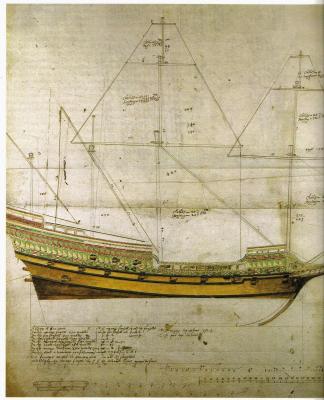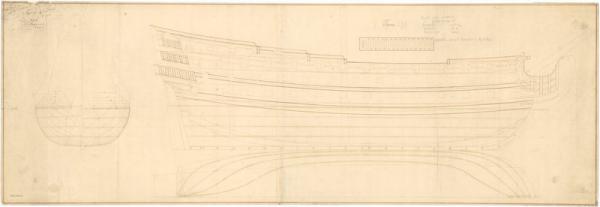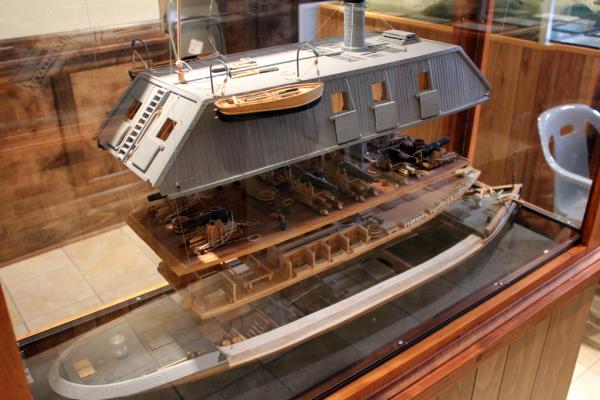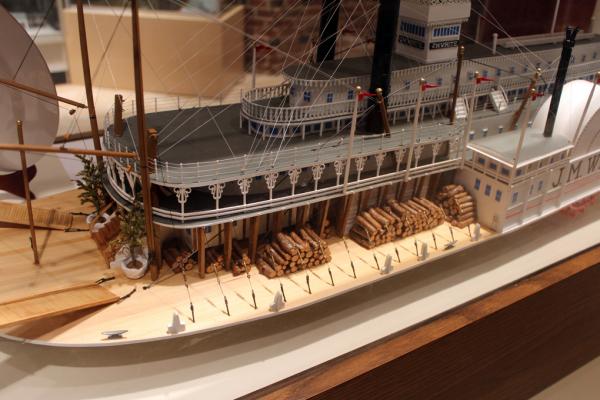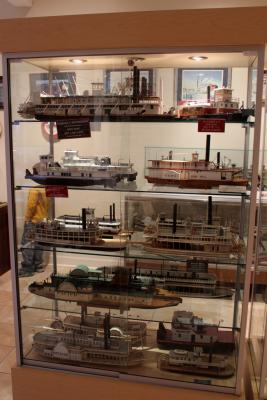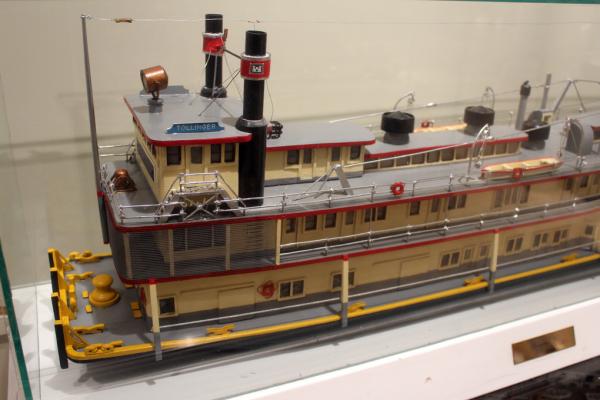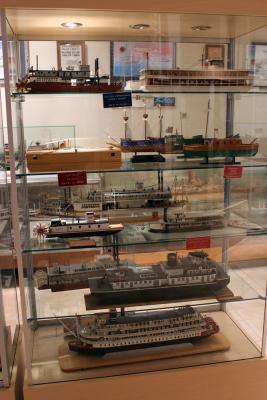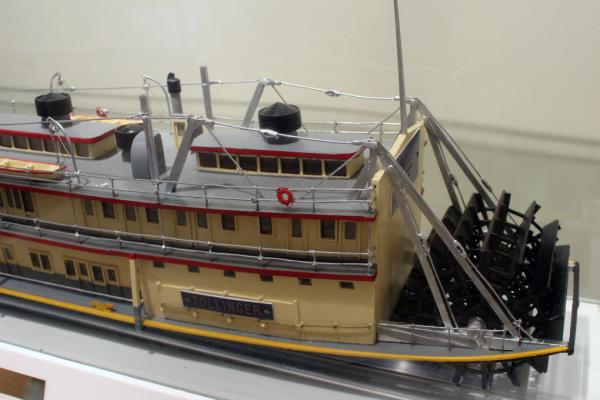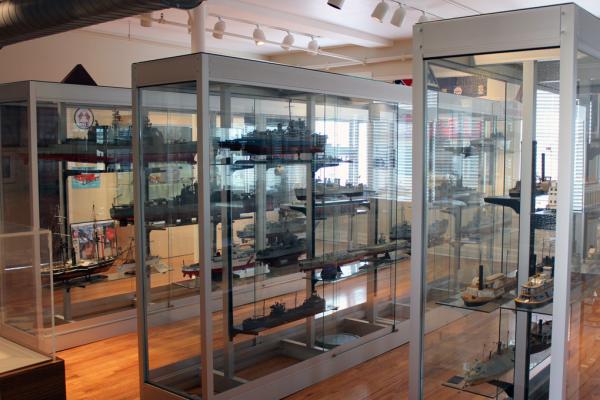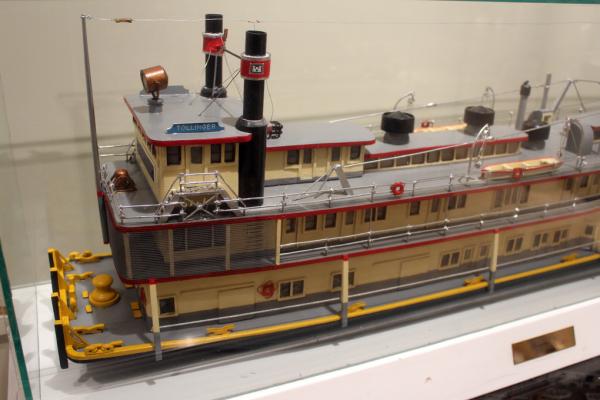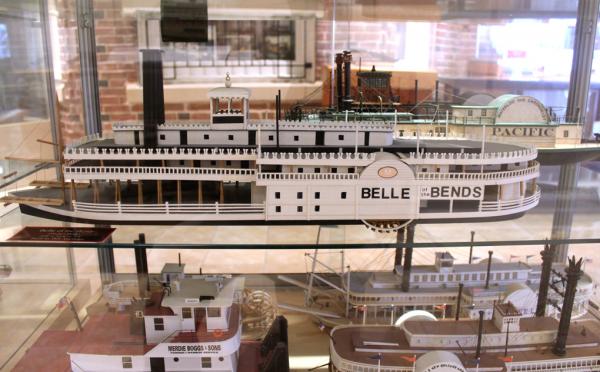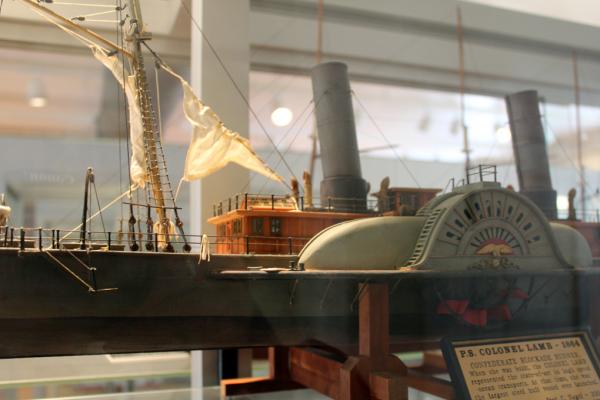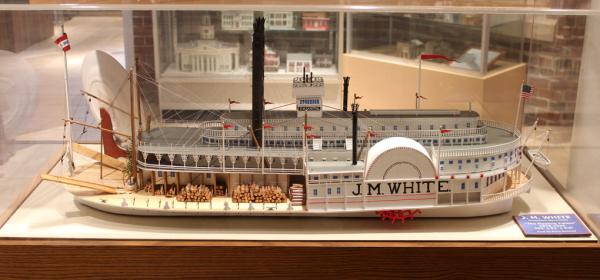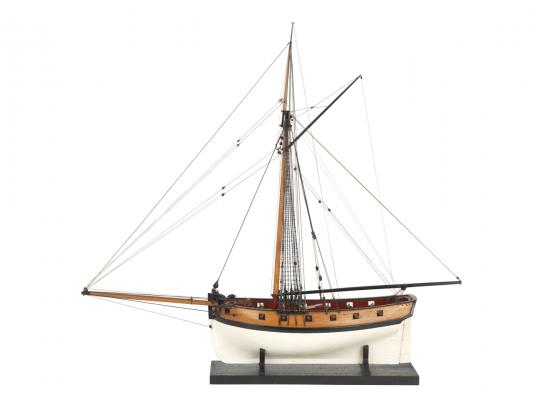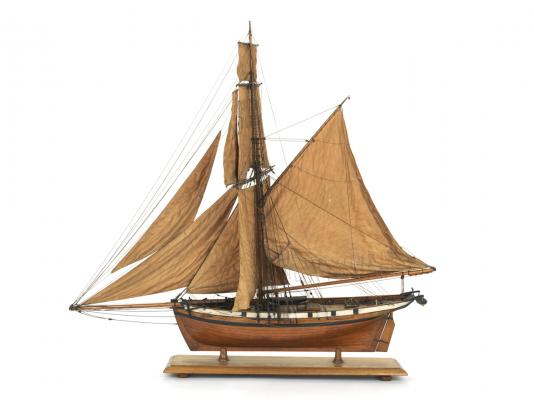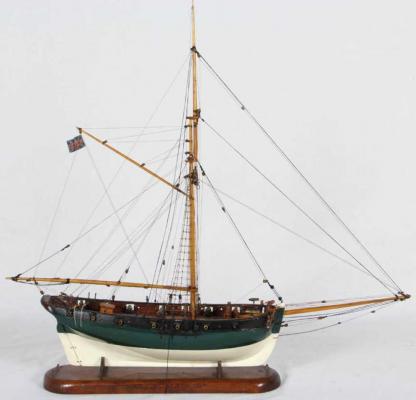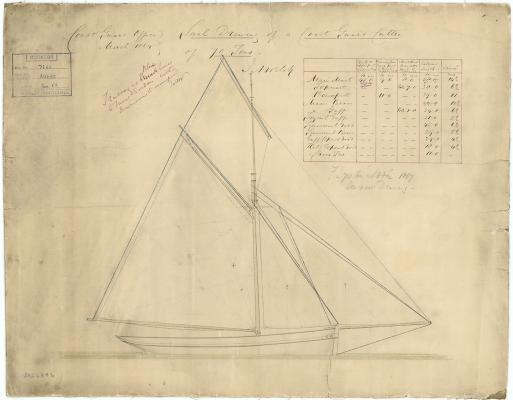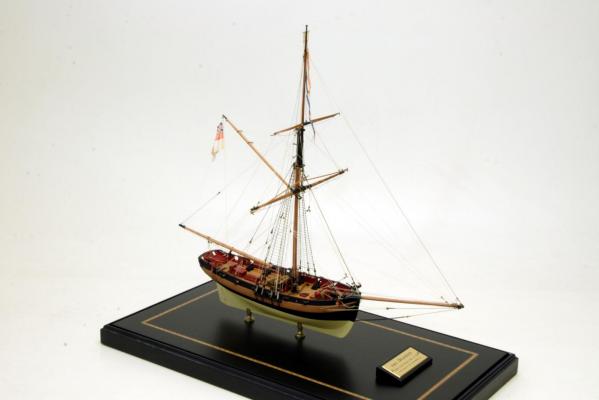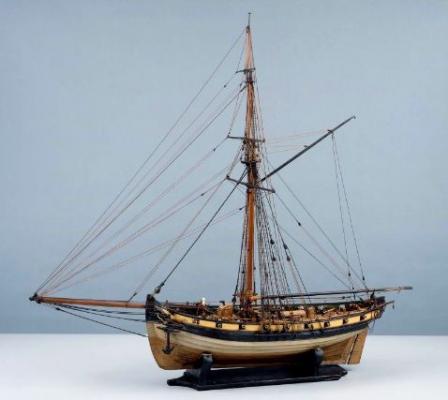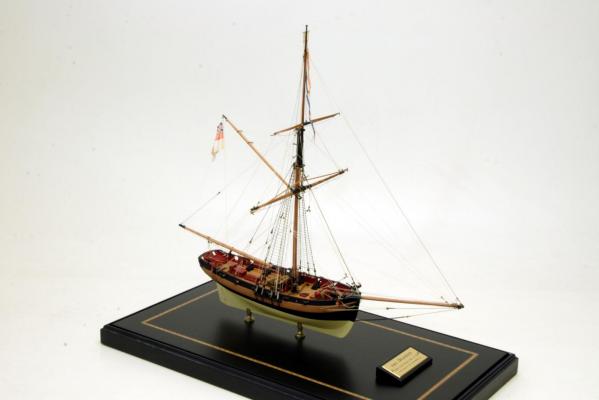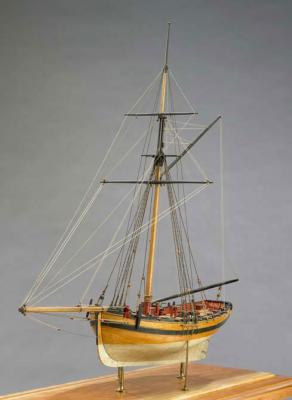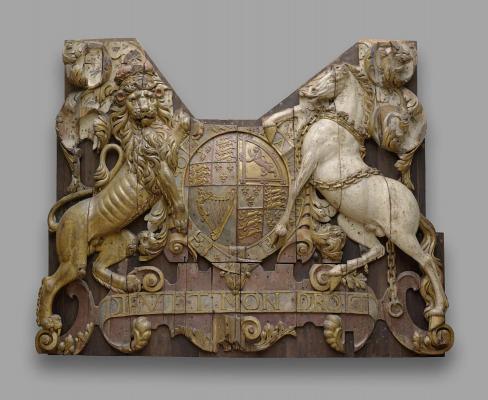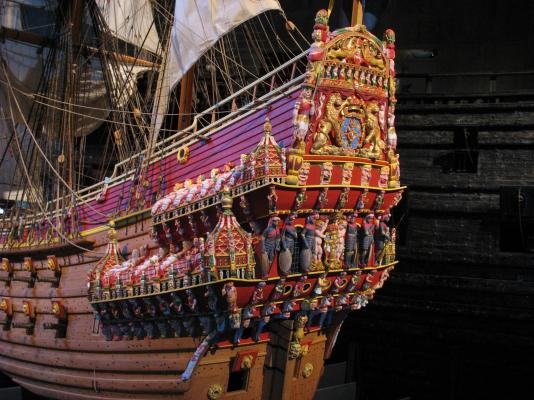-
Posts
841 -
Joined
-
Last visited
Content Type
Profiles
Forums
Gallery
Events
Everything posted by michaelpsutton2
-

Seeking information on determining load waterline
michaelpsutton2 replied to trippwj's topic in Nautical/Naval History
Tonight, I have spent a little time looking at a number of plans from the NMM website of ships from the latter half of the 1700's. The majority seem to indicate a load waterline. On an awful lot of them the load waterline is parallel to a line drawn between the lower edges of the first and last ports of the lowest gun deck. It is set so that it is very near to the lower edge of the main wale at it's lowest point. On some ships it may be slightly above or below that spot . An example shown below is the 3rd rate HMS Alfred of 1778. It might be said to be a good representative of most but not all the draughts of this period. The question though becomes .....were these ship designed in advance to float at this level or was the line arbitrarily placed on the plans in this position simply as a formality. One reads time and time again that there was difficulty with getting the lower deck guns high enough out of the water.The plans show plenty of freeboard. Maybe the ships were designed to use these waterlines but their captains overloaded them. Somebody with access to more of the archives than myself might compile a list of how much water the vessals were known to have drawn. This could be compared to the plans. Obviously the ships rose and fell with the amount of supplies ballast etc. -

Seeking information on determining load waterline
michaelpsutton2 replied to trippwj's topic in Nautical/Naval History
Mathew Bakers famous sail plan for a galleon of 1596 seems to show where he wanted her to float. The earliest named plan in the NMM the Tryumph of 1698 has a load line indicated -
Great point "Weather clothes" could have interfered with the use of oars..........
-

Seeking information on determining load waterline
michaelpsutton2 replied to trippwj's topic in Nautical/Naval History
All of the old methods produced rough approximations. Some were rougher than others. Shipbuilding was an art not a science until the middle of the eighteenth century.The ships were built to displace something more than the actual weight of their intended contents and could then be ballasted down the design load water line for stability. If you want a snapshot of just how well this worked in the real world, consult "Great ships" by Frank Fox. See how many of the ships, particularly the 1st, 2nd, & 3rd rates required girdling or padding the frames to increase the displacement. So many ships could hardly open the lower tier ports when they were at anchor much less at sea. This subject interests me and I would love a chance to read the paper when you are done -
I am familiar with those log entries. It was always my impression that the "weather clothes" were intended to provide addition freeboard not for shade. I think he would have said "awnings" which was a term on common usage back then. I could be wrong
-
The pictures are nice but if you were there.......how much usable did you find they transmitted all the way down?
- 13 replies
-
- USS Constitution
- Old Ironsides
-
(and 2 more)
Tagged with:
-
I had a chance to visit the "Old Depot Museum in Vicksburg". I am not sure that it is really a museum, but it is a fine collection of models and a splendid diorama of the battle of Vicksburg. I would really describe it as a showcase for an outstanding group of model builders. There are train models and memorabilia as well. I suggest that anyone passing through that great southern city take the time tostop by there.
-

Trying to identify an inherited solid hulled model
michaelpsutton2 replied to Beeman911's topic in Nautical/Naval History
It appears to be a partially completed kit for an American clipper of the 1850s. If you could find a catalog for "Scientific " or one of the other older manufacturers of models you might just find it. It is not the Cutty Sark or the Seawitch. -

bermuda brig like fair american, actual rudder contol
michaelpsutton2 replied to figuerres's topic in Nautical/Naval History
You might find that many of these had tillers not wheels. -
Just rec'd my copy of this book by James Bender. This volume is very similar to the four volume series British Warships in the" Age of Sail". There are listings for all of the major Dutch warships of the period. There are pleny of Van de Velde drawings and paintings. Unfortunately there are only a couple of plans because the Dutch did not use plans in the way that the English did. The book will make a fine addition to my bookshelf and the introductory price on Amazon is more than fair. I had hoped for a little more information on Dutch rigging and fitting practices though. I don't have nearly the same quality of sources as I do for English ships.
-

The black stripe
michaelpsutton2 replied to SaturnV's topic in Building, Framing, Planking and plating a ships hull and deck
I agree only the wales and the "black strake" would be black. The area between the waterline and the underside of the main wales might be white like the bottom or it might be left "bright" and painted over with varnish or tar. -

Swan Class Masts and Spars versus Mermaid Class
michaelpsutton2 replied to SaturnV's topic in Masting, rigging and sails
One potential difference between the spars of Swan's and Mermaids might be wouldings on the lower masts. I am not really sure how big a vessel had to be in order for wouldings to be used. -

Were ship figureheads routinely removed?
michaelpsutton2 replied to robnbill's topic in Nautical/Naval History
I have read that many of the British "tea clippers", in the 1860's & 1970's would remove their figureheads, put covering boards over the scroll work on the trailboards and paint over the brass rails during long passage to and from the east. When they neared port all of the decorative work would be revealed again. But this is a very specific trade and and very limited period. These ship were in a lucrative, high prestige trade where appearance was very important. This was during the time when the results of the annual tea races was front page news. I doubt if this happened often in common merchantmen or naval vessels. It's hard to remember but I think you can find references to this practice in the journals of the captain of the tea clipper Ariel if you can find a copy. -

Introduction of royal yards to the Royal Navy
michaelpsutton2 replied to Mark P's topic in Masting, rigging and sails
One of the earliest models i know of showing royals is the Fair American in the Naval Academy Museum. Although the date of thaqt model is by no means certain. The lengths for royal are given in the tables of my 1790 Steel's. On would think that Royals began to be used as "kites" in the 1770's and were formalized in the next decade. The first royals were set flying. That is the hoisted to the top of the topgallant pole pretty much like a flag with no parrel to hold it tight against the mast. The yard would not have had braces either. -

Soldering Trouble
michaelpsutton2 replied to rhephner's topic in Metal Work, Soldering and Metal Fittings
When soldering keep a wet sponge on your bench. Wipe the tip of the iron on the sponge after each application. The tip sould stay shiny and coatede smoothly with solder. If the solder beads up on the tip it needs cleaning. The soldering iron shoud not be used to melt the solder. It is used to heat the work piece until it is hot enough to melt the solder itself. Solder will not flow from a hot piece to a cooler piece. Press the iron on the work piece hard enough to transfer the heat. The more surface area of contac between the two the better. Apply the solder as far away from the soldering iron tip as possible. If the work piece is hot enough the solder will melt and flow towards the soldering iron -

Bobstay for bowsprit on Sherbourne?
michaelpsutton2 replied to tkay11's topic in Masting, rigging and sails
The earliest I think is from the 1763 group but most are later- 17 replies
-
- Sherbourne
- bobstay
-
(and 2 more)
Tagged with:
-

Bobstay for bowsprit on Sherbourne?
michaelpsutton2 replied to tkay11's topic in Masting, rigging and sails
Maybe Chuck P would comment. I believe his designs for the cutter Cheerful show a bobstay- 17 replies
-
- Sherbourne
- bobstay
-
(and 2 more)
Tagged with:
-

Bobstay for bowsprit on Sherbourne?
michaelpsutton2 replied to tkay11's topic in Masting, rigging and sails
I cannot speak to how or why any particular set of plan were prepared. The model company my be in possession of specific information for that exact vessel. But attached are the pic's of English cutters I have in my records. They all have bobstays. I just cannot imagine such a long, rather thin spar being in effect "unstayed". It is especially hard to see how it would work considering the relative sizes of the head sail in a cutter rig. Something would have to counteract the upward pull of the sails.- 17 replies
-
- Sherbourne
- bobstay
-
(and 2 more)
Tagged with:
-

Bobstay for bowsprit on Sherbourne?
michaelpsutton2 replied to tkay11's topic in Masting, rigging and sails
Based on intuition and sailing experience in modern boats, not historical research, I do not think the two questions are linked. I would think that both a running and a fixed bowsprit would have a bobstay by this period. The difference could be that on a running bowsprit all of the rigging would be attached in such a way as to be easily moved and set up again. Remember even on a large ship, the "fixed" bowsprit could be removed for replacement or repair.- 17 replies
-
- Sherbourne
- bobstay
-
(and 2 more)
Tagged with:
-
She was at the very least 12 years old at the time of her historic voyage and. I'll bet a buck she had very little paint on her when she arrived in New England. There are some records that would lead you to believe that she had been knocked about quite a bit on rough passages to Norway and other north sea ports. Ships like most things in this life were much shinier when new than later in their lives. Repairs were constant and often made on the road with whatever materials came to hand. So you have to decide at what point in her career do you wish to portray the humble little vessel.
-

Researching a Constitution Build
michaelpsutton2 replied to fletch944t's topic in Wood ship model kits
Are there going to be any changes in the ship during this rebuild? -

Researching a Constitution Build
michaelpsutton2 replied to fletch944t's topic in Wood ship model kits
A while back I started an inquiry into the window arrangements You might search "USS Constitution quarter gallery window panes" Maybe you will uncover some information in your search that you could share with me. Happy hunting -
The only other "real" chunk of carving from the 17th century is the coat fo arms from the Royal Charles of 1655. She was captured by the Dutch in 1667 and broken up in the 1670's. The coat of arms from her stern now hangs in the Rijks museum. It is multi-colored but faded And I cannot tell how bright the colors once may have been
-
Recently the microscopic traces of paint remaining on the Vasa were analyzed. The results are interesting and at least to my eye unexpected. Lots and lots of bright colors for sure. These pics represent the museum's current best guess.
-
The boats are some of the best plastic kit bashing I have seen. My compliments to the chef!
- 34 replies
-
- constitution
- revell
-
(and 1 more)
Tagged with:
About us
Modelshipworld - Advancing Ship Modeling through Research
SSL Secured
Your security is important for us so this Website is SSL-Secured
NRG Mailing Address
Nautical Research Guild
237 South Lincoln Street
Westmont IL, 60559-1917
Model Ship World ® and the MSW logo are Registered Trademarks, and belong to the Nautical Research Guild (United States Patent and Trademark Office: No. 6,929,264 & No. 6,929,274, registered Dec. 20, 2022)
Helpful Links
About the NRG
If you enjoy building ship models that are historically accurate as well as beautiful, then The Nautical Research Guild (NRG) is just right for you.
The Guild is a non-profit educational organization whose mission is to “Advance Ship Modeling Through Research”. We provide support to our members in their efforts to raise the quality of their model ships.
The Nautical Research Guild has published our world-renowned quarterly magazine, The Nautical Research Journal, since 1955. The pages of the Journal are full of articles by accomplished ship modelers who show you how they create those exquisite details on their models, and by maritime historians who show you the correct details to build. The Journal is available in both print and digital editions. Go to the NRG web site (www.thenrg.org) to download a complimentary digital copy of the Journal. The NRG also publishes plan sets, books and compilations of back issues of the Journal and the former Ships in Scale and Model Ship Builder magazines.




